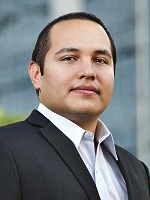Use What You Know to Grow
Posted on December 5, 2016 byIn the last article, I briefly discussed the beginning of my venture into apartment investing. I encouraged people to do some self-learning before going to networking events so you have a better idea about what is going on. While attending plenty of networking events and having a handful of meetings, I realized that you may have something the person you are looking to for advice wants to learn from you. This works out great because in all my articles I discuss the importance of win-win scenarios.
Let me explain what has happened in my pursuit in learning how to invest in multi-family. First, most multi-family clubs or gurus want you to spend $5,000-$25,000 for them to teach you how to invest in multi-family. The lower end is reasonable but you don’t get much and the higher end is crazy. I’d rather take that money and be a limited partner in an actual deal. Keep in mind I am referring to multifamily with a purchase price of at least 1MM and/or 50+ units. I have participated in much smaller multifamily properties. Luckily, I found some great people that I hope will be able to teach me what I need to learn to be successful. They told me it was not worth investing that much when they were willing to do it in exchange for my time and expertise.
These guys are obviously still looking to acquire more apartments and by speaking with them for a while I noticed they could use another person to assist them in acquiring deals. I know what you are thinking, “Michael you just started learning about investing in apartments. How are you going to help them find apartment deals?” Well, I have the skills one needs to locate single family homes which can easily translate to multifamily. I know how to sell, negotiate, handle objections, prospect, cold call, build rapport with sellers and much more. What I need is the information on how to use those skills in multifamily like preparing and analyzing pro formas, reading and understanding private placement memorandums, how to structure syndication, etc. In other words, once I am given this information and see it applied I can execute it with the skills I already have. I see this being a great win-win situation for us both.
Another multifamily investor I met was very interested in my experience in flipping houses after repairing them. He had invested in multifamily as a passive investor and had plenty of information for me. In exchange, he asked if I would partner with him on a few flips. In fact, he even volunteered to be an equity partner in the next deal I do so he can learn the details behind a flip and how to properly run it from start to finish. He is going to give me access to the information he paid for, at the prices mentioned earlier, in exchange for knowledge in flipping homes. Another win-win for the both of us.
I also met another multifamily investor that had just a little bit more experience in apartments than I because he had already been involved in 1 deal, also as a passive investor. He too wanted to learn more about flipping homes in order to build his capital while simultaneously investing in multifamily properties. He offered to partner on a single family project as an equity partner or debt partner as long as I walked him through the process from start to finish. Again, a win-win.
When I first started investigating on how to get started in multifamily investing I did not see these routes as options. I also could not imagine that I would be able to bring much value to an investor of multifamily. To me they were already at what I considered the “next level” in real estate investing. However, by self-educating a bit, networking and taking advantage of what I already know, I have been able to make huge strides towards my goal of investing in multifamily as an active investor. Now look at your current knowledge base and figure out how that can be an asset to the person you want to learn from. Approach that person and make a deal that would set up a win-win scenario. You have nothing to lose and a lot to gain and share.
